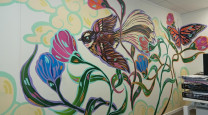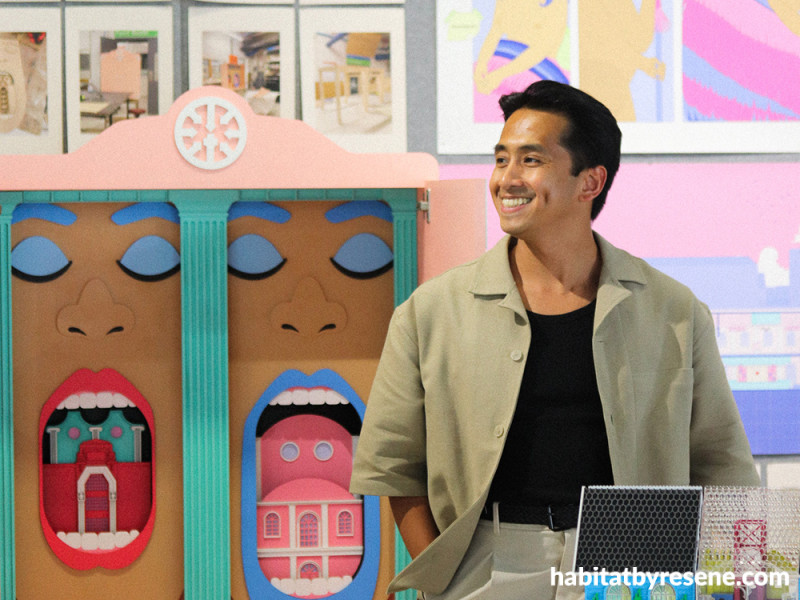
Building belonging: Josh Sanoria’s award-winning Queeriosities
14 Jan 2025
Josh Sanoria, a Master of Architecture student at Victoria University of Wellington, is redefining inclusivity in architecture. His thesis, Queeriosities of Space, explores queer spaces in the Philippines and Aotearoa New Zealand, using design to celebrate identity and belonging. Recently awarded the 2024 TeKāhuiWhaihanga NZIA Resene Student Design Award, Josh’s work is a testament to the power of architecture to challenge norms and inspire connection. We speak to Josh to learn more.
Can you tell us a bit about what you do?
I'm currently in the final stages of my Master of Architecture (Professional) degree at Victoria University of Wellington, working on my thesis, Queeriosities of Space. My research focuses on cross-cultural understandings of queer spaces, particularly between the Philippines, where I am originally from, and Aotearoa New Zealand, my current home. The project is shaped by the lived experiences of queer communities, with architectural design responses that reflect each cultural context.
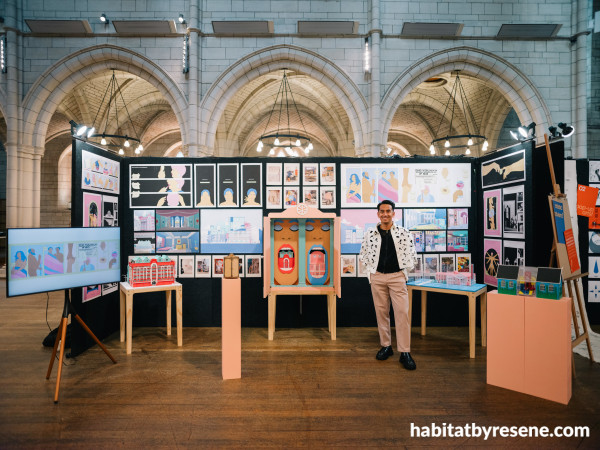
NZIA Resene Student Design Awards Exhibition. Image by David St George.
What has your career path been like to get you to where you are today?
It all started in the Philippines, where I studied Fine Arts and Design at the University of Santo Tomas in Manila. After finishing that degree in 2012, I worked as a Graphic Designer for a few years and decided to move to New Zealand in 2016. I had the opportunity to work with small businesses and startups as a Digital Designer in Wellington, creating illustrations, motion graphics and website design assets. However, I never forgot my dream of becoming an architect. In 2020, I enrolled at Victoria University of Wellington for the Bachelor of Architectural Studies programme, where I developed a deeper appreciation for how architecture shapes human experiences and encourages connection. This journey ultimately led to my interest in community-driven and socially-led projects.
What interests you about architecture and design?
I've always believed that architecture and design are 'tools' to create spaces that shape human experiences, and I find that deeply powerful. I'm particularly interested in how these 'tools' can address relevant issues that can lead into creating more inclusive environments. Architecture has the potential to tell stories and reflect diverse cultures. For me, it's more than just aesthetics or function. It's also about inspiring a sense of belonging in our communities, regardless of who you are, where you come from or your gender.
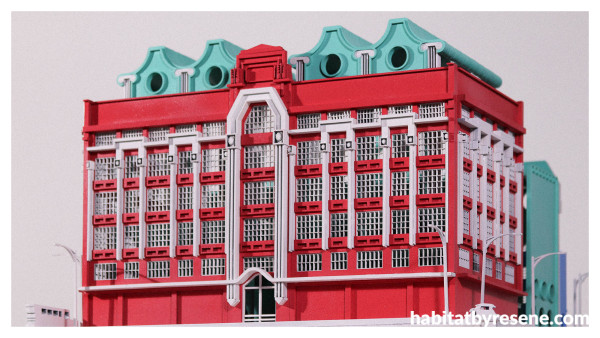
Queen of the Streets.
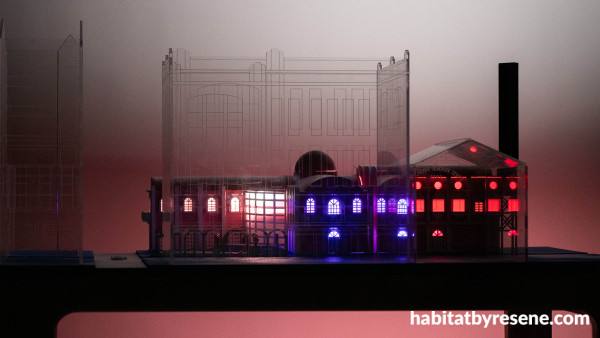
The Pink Swan.
You recently won the 2024 TeKāhuiWhaihanga New Zealand Institute of Architects Resene Student Design Award, can you tell us about this project and what it was like to get the award?
Queeriosities of Space investigates the cross-cultural expressions and understandings of queer spaces in the contexts of the Philippines and New Zealand. Drawing on architectural theory and stories of lived experiences, this research explores how spaces are shaped by and for queer communities in these two distinct sociocultural environments. The study highlights how human experiences can influence creating queer spaces, as well as how these spaces resist or adapt to heteronormative norms. Through the queer lens, this thesis reimagines architectural design as a tool to welcome inclusivity and belonging, challenging the traditional image of space-making. By employing a methodology that blends ethnographic research, spatial analysis and speculative design, Queeriosities of Space positions queer spaces as sites of resilience, creativity and self-expression. The research ultimately aims to contribute to a deeper understanding of the intersections between spatial occupation and identity, offering new perspectives for designing inclusive built environments.
Winning the NZIA Resene Student Design Award was an incredible honour. The award not only recognised the project but also highlighted the importance of diverse narratives in architecture and ultimately, it felt like queer voices are amplified. Receiving it was inspiring and motivating. It's a reminder of the responsibility we have as designers to push boundaries and create meaningful work.
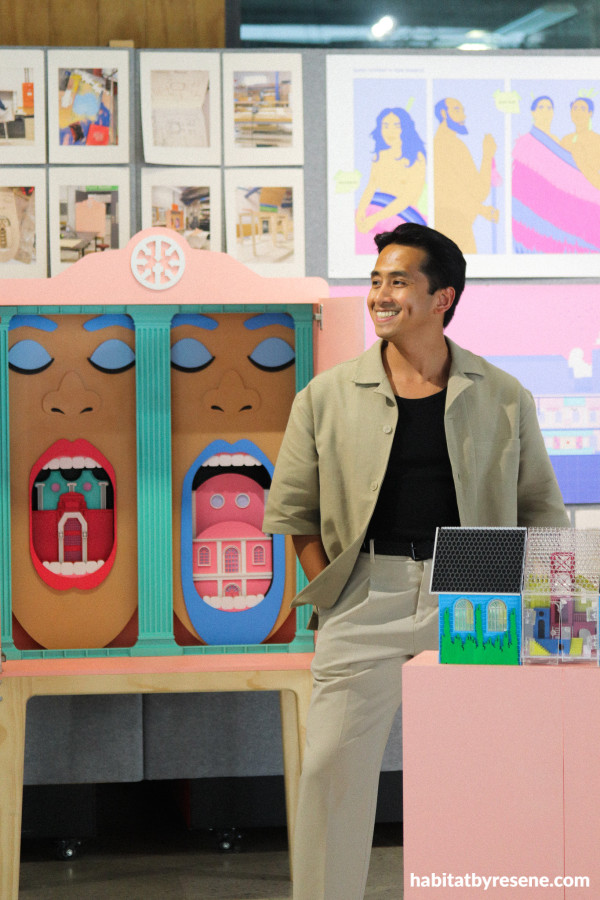
Josh Sanoria at the VUW Exhibition.
Do you have a favourite project you’ve worked on in your career?
My thesis, Queeriosities of Space, is definitely my favourite so far. It’s been a deeply personal journey, combining research, design and my own lived experiences shared with others. The project allowed me to challenge traditional ideas of space and propose speculative designs that celebrate the queer community. Another favourite would be a design project I've done called Happyland, which focuses on a community in Tondo, Manila living in a landfill. The architectural intervention proposes a recycling centre where the community can generate a source of livelihood out of waste, aiming to mitigate their current situation. This project received the TEAM Architects Scholarship Premium Award.
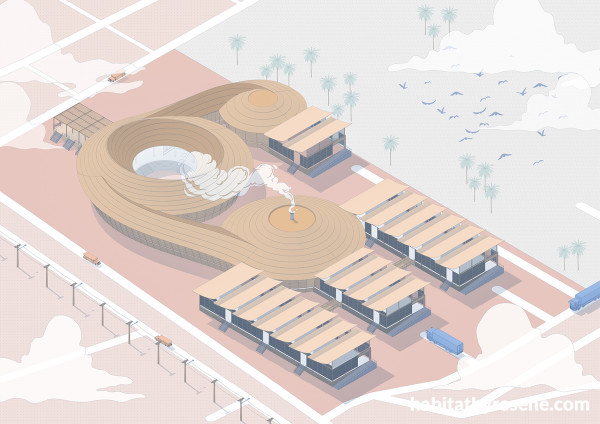
Happyland – focussing on a community in Tondo, Manila living in a landfill.
What is next for you?
I'm currently preparing to step into the professional world of architecture, eager to apply the ideas and skills I've developed throughout my career as a designer and during my studies in architecture to real-world projects. I’m excited to continue exploring ways to create inclusive and impactful designs. In the long term, I hope to contribute to shaping spaces that empower and represent everyone in our community while expanding the boundaries of architectural discourse.
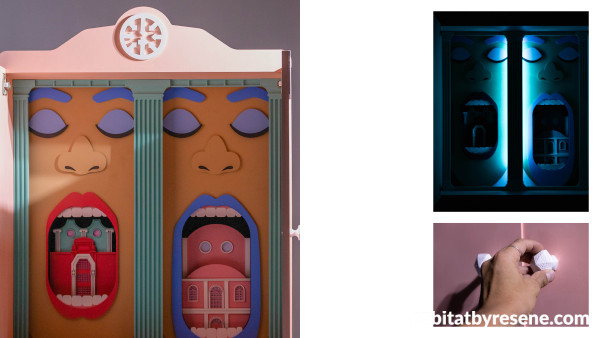
The Liberation of the Closeted Space. Featuring Resene Cornflower and Resene Alamo.
What is your favourite Resene colour?
The installation art for Queeriosities of Space named The Liberation of the Closeted Space features two of my favourite Resene colours: Resene Cornflower and Resene Alamo. The closet structure was painted with Resene Cornflower and the two faces in Resene Alamo. These vibrant colours really captured the spirit of the project, emphasising the contrast between confinement and freedom. During the NZIA Resene Student Design Award Exhibition night, the attention of the public was drawn to the project, with many visitors captivated by the bold colours and the emotional resonance of the installation. The use of colour in this piece was not only an aesthetic choice but a deliberate act of storytelling, bringing to life the themes of queer identity, freedom and the emotional complexity of the closet. The installation sparked meaningful conversations and reflections on the significance of this space in queer lives.
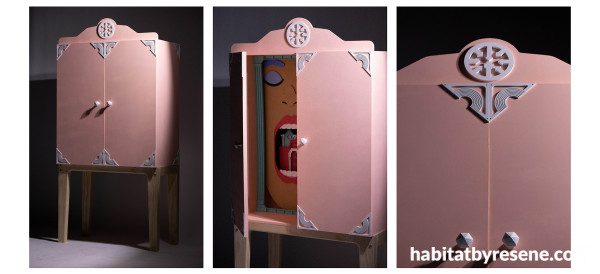
Welcome to the Closet, featuring Resene Cornflower and Resene Alamo, two of Josh’s favourite Resene colours.
Published: 14 Jan 2025




